| |
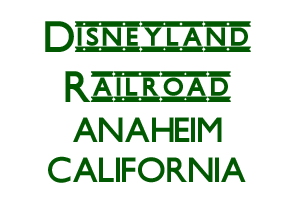 |
Walt Disney was a huge fan of trains
and the Dinseyland Railroad was an important part of his revolutionary
idea of the theme park. The narrow gauge Railroad was designed to circle the park
with just over a mile of track, as
a ride and mode of transportation. Along the way is scenery including
two elaborate dioramas as well as smaller decorative vignettes
representing the themed areas and animatronic animals and figures. The
history of the Railroad is presented in the Main Street Station as well
as in a gallery on Main Street. |
| |
|
|
 |
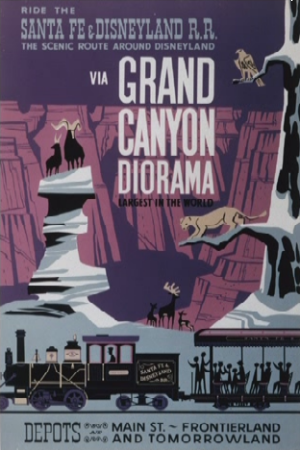 |
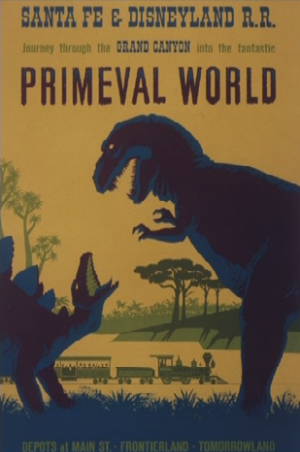 |
| |
|
|
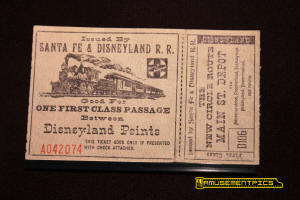 |
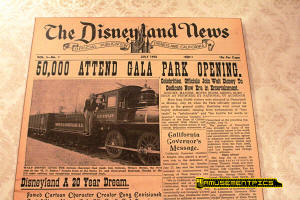 |
 |
| |
|
|
 |
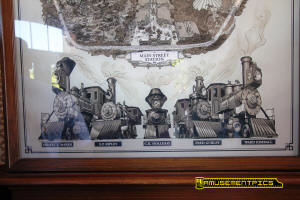
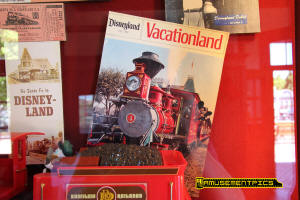
 |
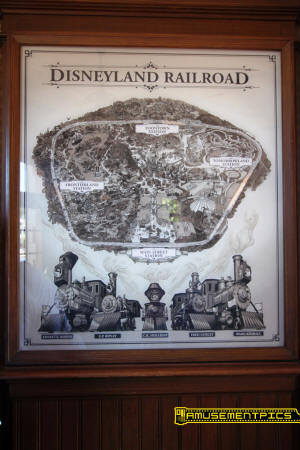 |
| |
|
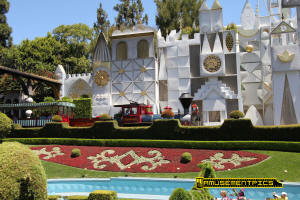 |
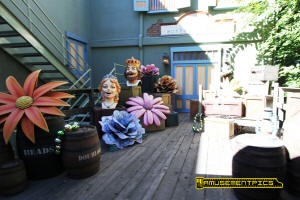 |
| |
|
|
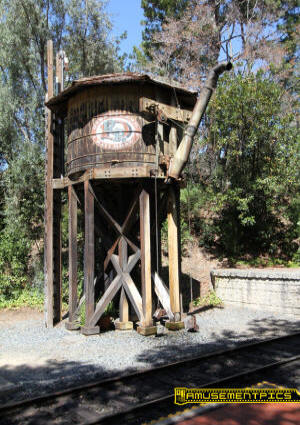 |
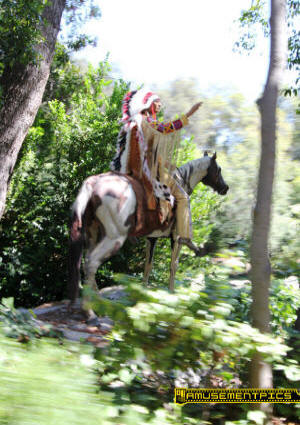
_small.jpg) |
_small.jpg) |
| |
|
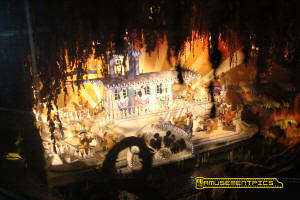 |
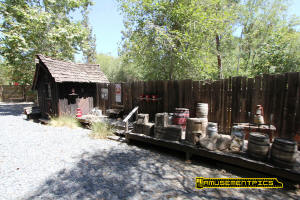 |
| |
|
|
_small.jpg) |
_small.jpg) |
_small.jpg) |
| |
|
|
_small.jpg) |
_small.jpg) |
_small.jpg) |
| |
|
|
_small.jpg) |
_small.jpg) |
_small.jpg) |
| |
|
|
_small.jpg) |
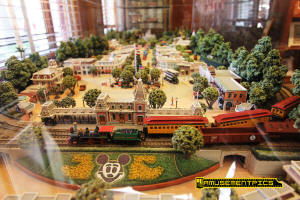 |
 |
| |
|
|
 |
 |
 |
| |
|
|
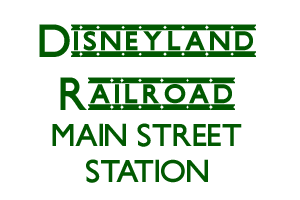 |
One of the most iconic images in the world is
the entrance to Disneyland with its signature train station sitting high
above the entrance gates. The station sits at the foot of Main Street
USA and is designed to reflect the turn of the American small towns of
the early twentieth century like the rest of Main Street. |
_small.jpg) |
| |
|
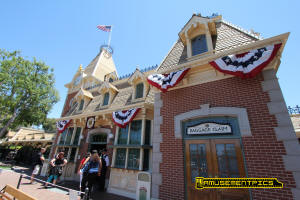 |
_small.jpg)
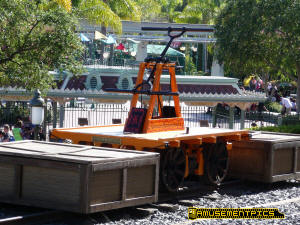
_small.jpg)
_small.jpg)
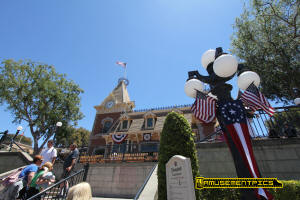
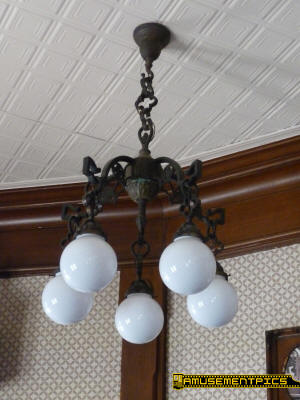
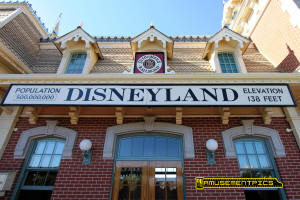
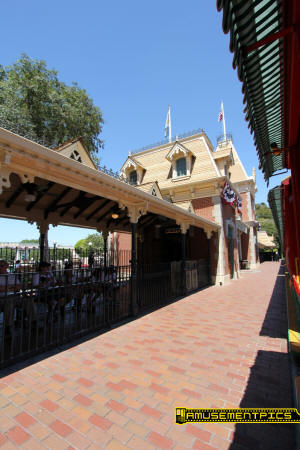 |
_small.jpg) |
| |
|
_small.jpg) |
_small.jpg) |
| |
|
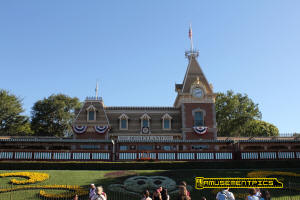 |
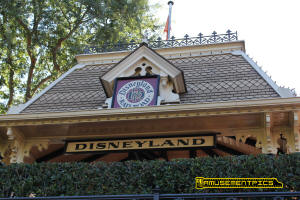 |
| |
|
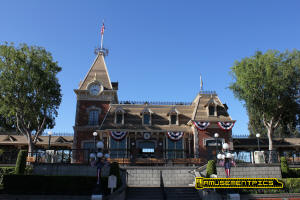 |
 |
| |
|
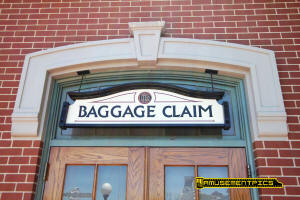 |
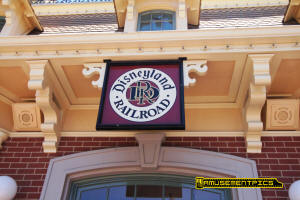 |
| |
|
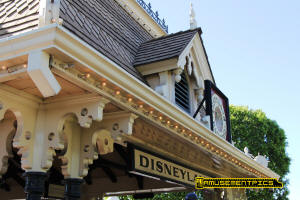 |
 |
| |
|
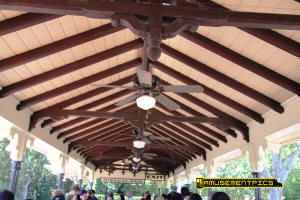 |
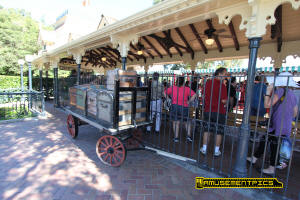 |
| |
|
 |
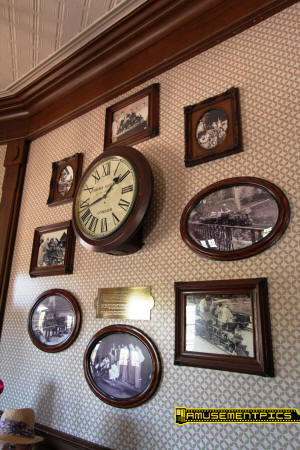 |
| |
|
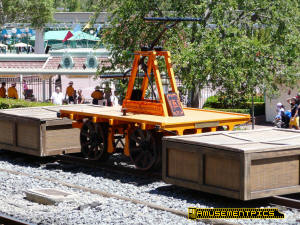 |
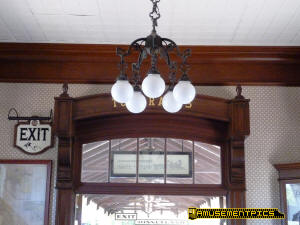 |
| |
|
|
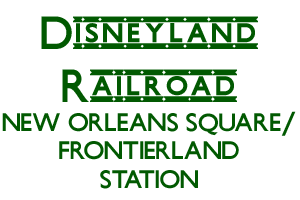 |
Along the edge of New Orleans Square, the
station serves Frontierland and Critter Country as well. The simple
station building is on the opposite side of the tracks from the
platform, serving as a backdrop as well as for the crew's break room
facilities. |
_small.jpg) |
| |
|
|
_small.jpg) |
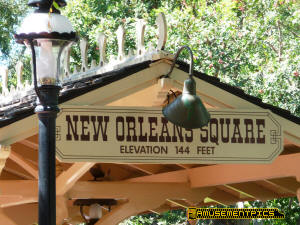 |
_small.jpg) |
| |
|
|
 |
 |
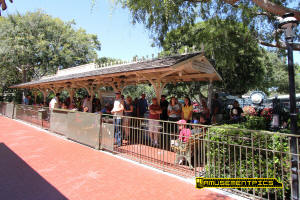 |
| |
|
|
_small.jpg) |
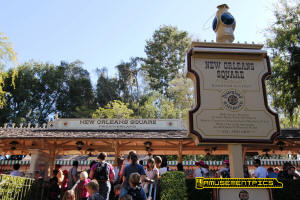 |
_small.jpg) |
| |
|
|
_small.jpg) |
_small.jpg) |
_small.jpg) |
| |
|
|
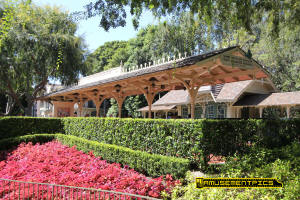 |
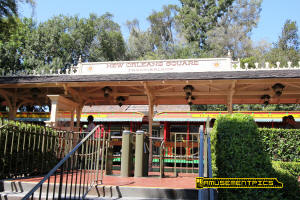 |
 |
| |
|
|
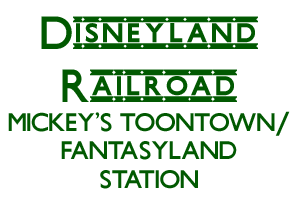 |
The newest of the four stations along the
Disneyland Railroad is the Mickey's Toontown Station serving Toontown
and Fantasyland. The small station combines the cartoonish lines of
Toontown with the profile of the buildings of Fantasyland since it
straddles the two areas. |
 |
| |
|
|
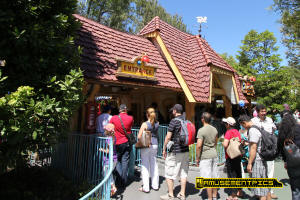 |
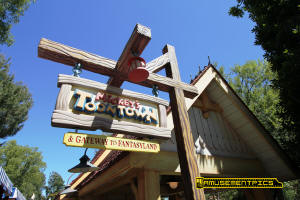 |
 |
| |
|
|
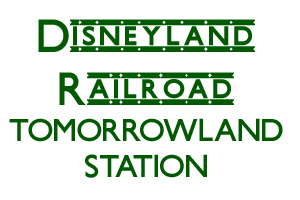 |
The Tomorrowland Station is the smallest and
simplest of the four stations, with just a simple, angled metal roof as
covering. The architecture combines the modern elements of Tomorrowland
with more traditional lanterns to meld the styles of the trains and
area. Outside a changing billboard advertises the destinations served. |
_small.jpg) |
| |
|
|
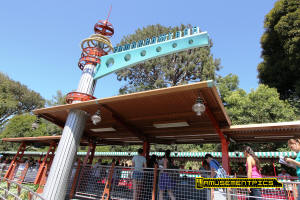 |
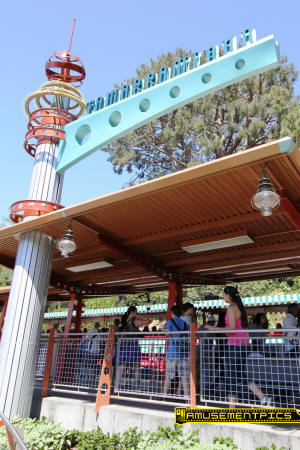 |
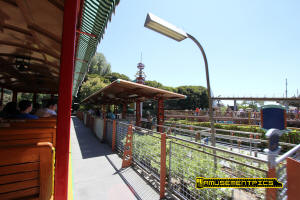 |
| |
|
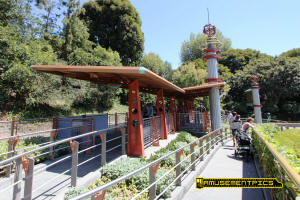 |
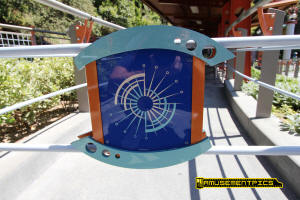 |
| |
|
|
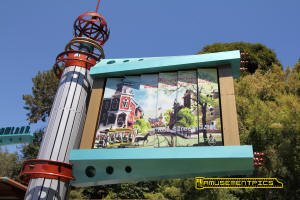 |
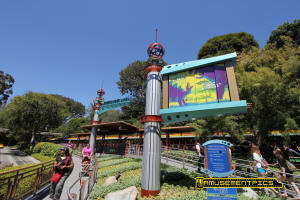 |
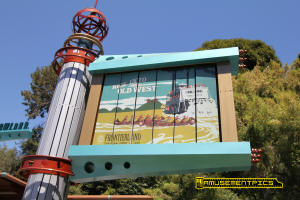 |
|
|
|
 |
An American
style 4-4-0 built by the WED Studio in 1954 that went into
service at Disneyland on Opening Day, 1955. It was named for Cyrus
Kurtz Holliday, founder of the Santa Fe Railroad in 1859. |
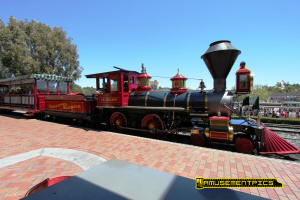 |
| |
|
|
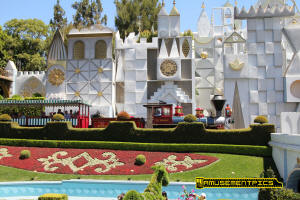 |
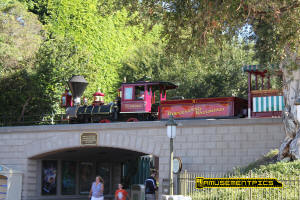 |
 |
| |
|
|
 |
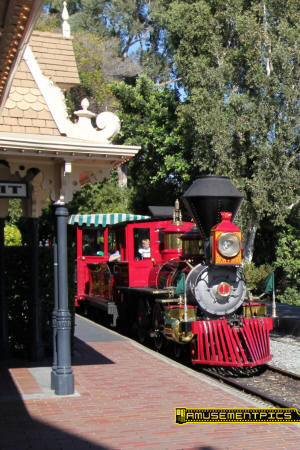 |
 |
| |
|
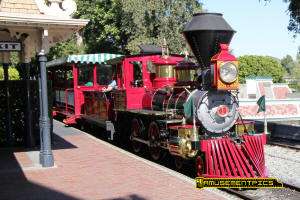 |
 |
|
|
|
 |
An American style 4-4-0
built by the WED Studio in 1954 that went into service at
Disneyland on Opening Day, 1955. It was named for Edward Payson
Ripley, an early president of the Atchison, Topeka and Santa Fe
Railway. |
_small.jpg) |
| |
|
|
_small.jpg) |
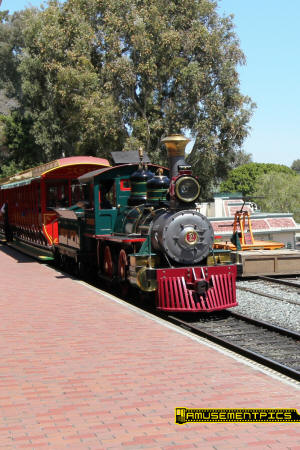 |
_small.jpg) |
| |
|
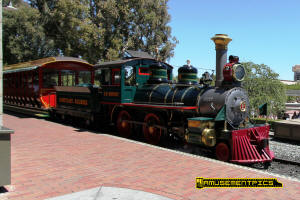 |
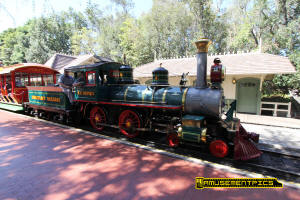 |
| |
|
|
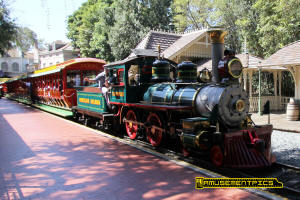 |
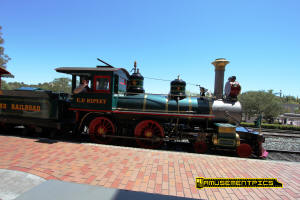 |
 |
|
|
|
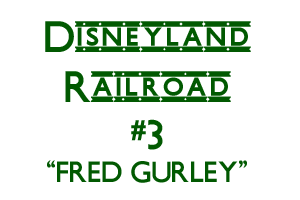 |
A 2-4-4 built by Baldwin Locomotive Works in 1894 that
went into service at Disneyland in 1958. The locomotive, named
for the then-current chairman of the ATSF, Fred G. Gurley,
is the oldest single piece of railroad equipment in use at any
Disney theme park. The locomotive was originally used in
Louisiana to transport sugar cane.
|
_small.jpg) |
| |
|
|
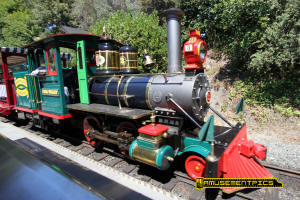 |
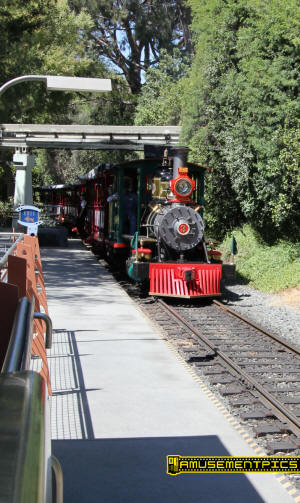 |
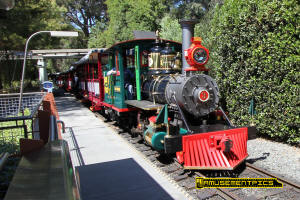 |
| |
|
 |
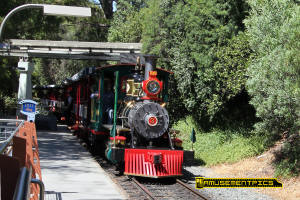 |
|
|
|
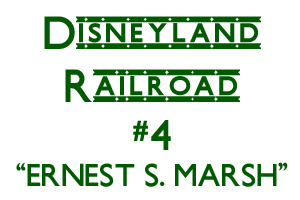 |
A 2-4-0 originally built by
Baldwin Locomotive Works as a 0-4-0 saddle-tank in 1925;
went into service at Disneyland in 1959. It was named for the Santa Fe's
then-current president. The locomotive originally served the Raritan
River Sand Company in New Jersey before it was purchased
and used by the Pine Creek Railroad. |
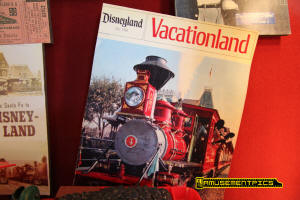 |
|
|
|
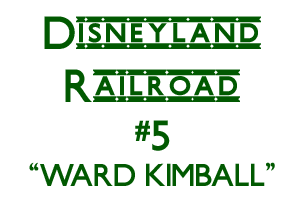 |
A 2-4-4, built by Baldwin
Locomotive Works in 1902 for the Laurel Valley Plantation of Louisiana and
later received in trade from Cedar Point Amusement Park as the
Maud L in 1999. Cedar Point added a lead truck during its service
there, making it a 2-4-4T. It went into service at Disneyland in 2005,
as part of the park's 50th anniversary celebration. |
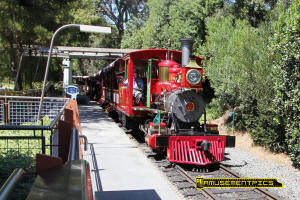 |
| |
|
|
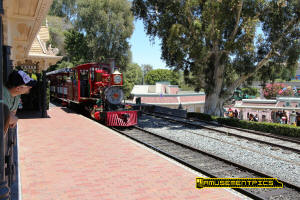 |
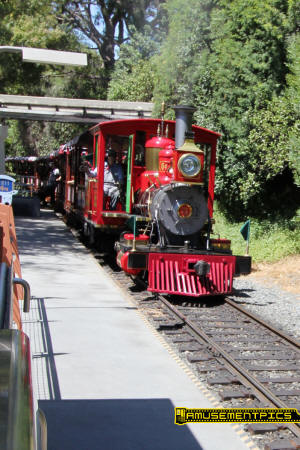 |
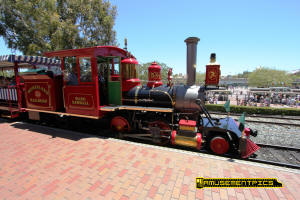 |
| |
|
 |
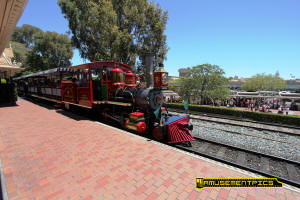 |
| |
|
|
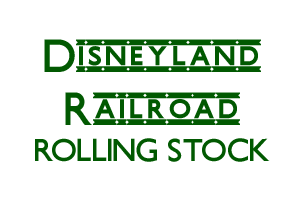 |
There are four trains currently in operation on the Disneyland
Railroad, replacing the original two. Initially there was a passenger
train that only departed from the Main Street Station, and a freight
train that only departed from Frontierland. The layout originally
featured passing tracks at both of those stations, allowing the other
train to pass while one was loading. The remnants of the passing track
at Main Street are still visible where the handcar is parked, and the
area formerly occupied by the passing track is the gravel in front of
the New Orleans Square Station.
|
| |
|
- The 200 series train features cars designed
to look like a freight train complete with a caboose. The cars were
modified over time with "holiday seating" facing out the right side
of the train. The passenger cars feature red and white striped
awnings.
- The 300 series cars are the "excursion cars"
with forward facing bench seating.
- The 400 series feature "holiday seating" the
green and white striped awnings.
- The 500 series feature "holiday seating" the
blue and white striped awnings.
|
 |
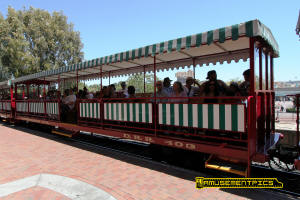 |
| |
|
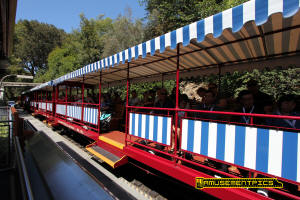 |
 |
| |
|
|
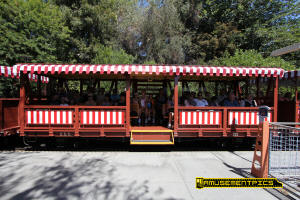 |
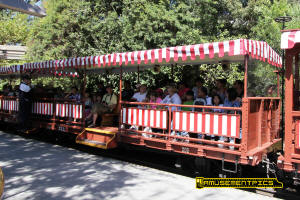 |
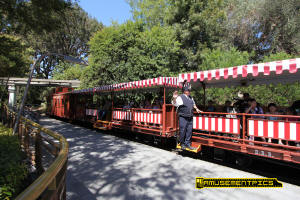 |
| |
|
|
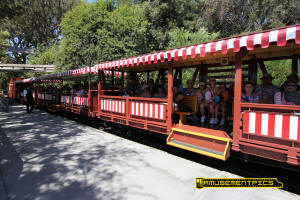 |
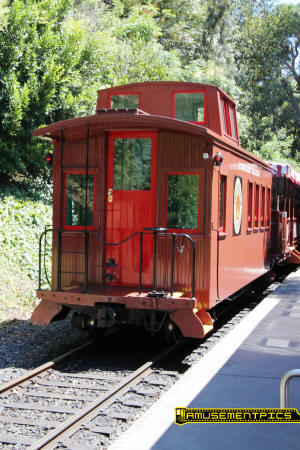
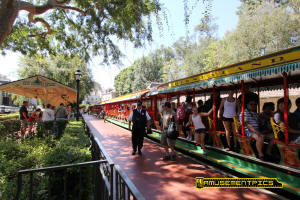 |
 |
| |
|
 |
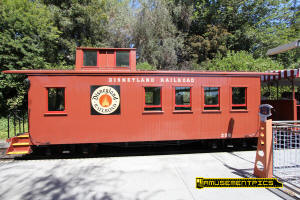 |
| |
|
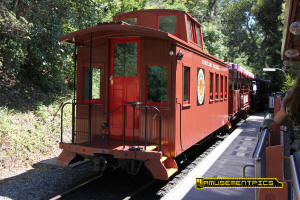 |
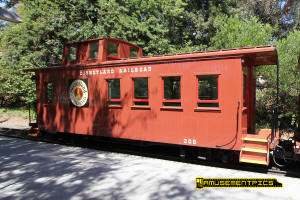 |
| |
|
|
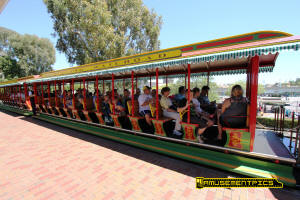 |
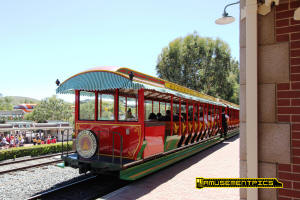 |
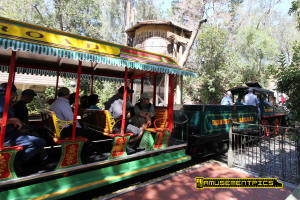 |
| |
|
|
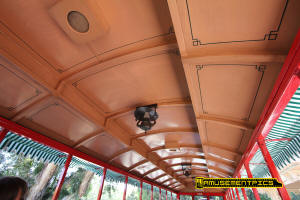 |
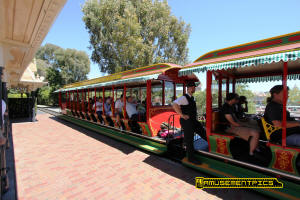 |
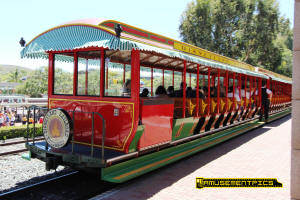 |
|
|
|
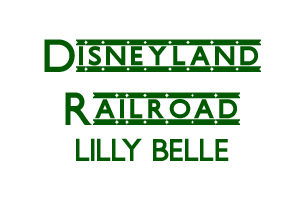 |
The only one of the original 100 series coaches
that served as the passenger train still in operation at Disneyland
is #106, now known as the Lilly Belle, named for Walt's wife. The car
was outfitted in the 1970's to be a VIP coach with beautiful finishes
and fittings, and serves as a private car available to Club 33 members. |
 |
| |
|
|
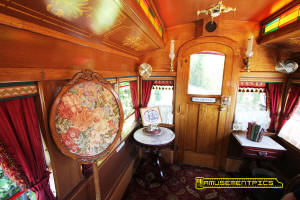 |
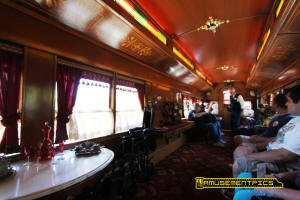 |
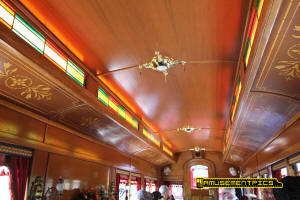 |
| |
|
|
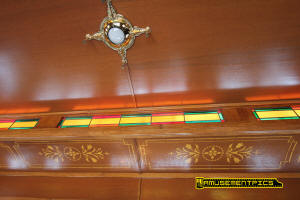 |
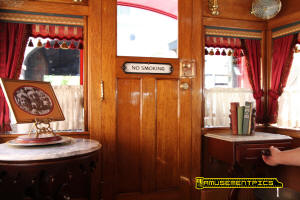 |
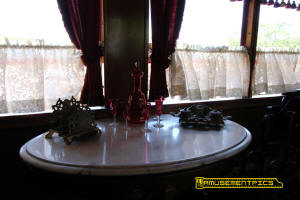 |
| |
|
|
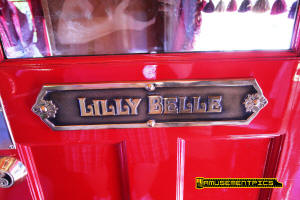 |
 |
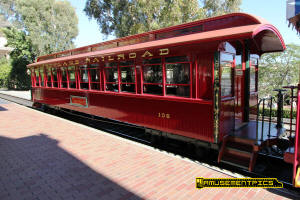 |
| |
|
|
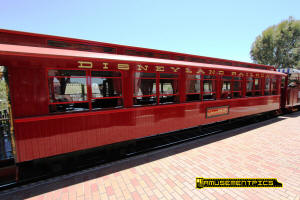 |
 |
 |
| |
|
|
 |
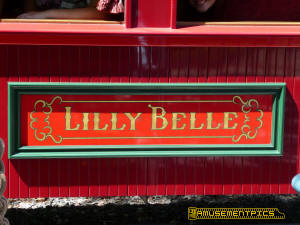 |
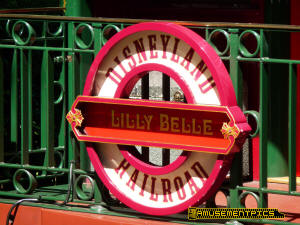 |
| |
|
|
![]()



